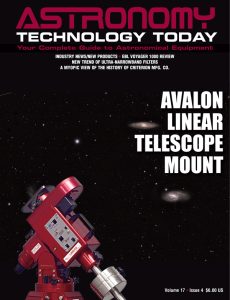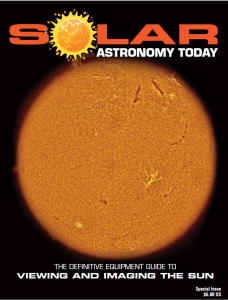The Avalon StarGo Plus is a new Avalon Instruments Raspberry Pi controller offering a complete remote and complete setup management. It is retrogradable for users of the Avalon StarGo GoTo control system and the company provides more information on how to do so on their website.
 The Avalon StarGo Plus has been designed to have a small footprint at just 140 x 99 x 33 mm and it offers standard fixing holes pacing (93 and 35 mm) in order to allow the maximum compatibility and flexible assembling opportunities. The Avalon StarGo Plus can be directly assembled on the Avalon T-pod 90, 110 and 130 legs on the DEC bottom side and can also be mounted on the upper or lower areas of a telescope.
The Avalon StarGo Plus has been designed to have a small footprint at just 140 x 99 x 33 mm and it offers standard fixing holes pacing (93 and 35 mm) in order to allow the maximum compatibility and flexible assembling opportunities. The Avalon StarGo Plus can be directly assembled on the Avalon T-pod 90, 110 and 130 legs on the DEC bottom side and can also be mounted on the upper or lower areas of a telescope.
The Avalon StarGo Plus can be accessed directly on the StarGo Plus Raspberry Pi operative system for complete remote control or it can be utilized via software installed on a host PC using programs such as Carte du Ciel, N.I.N.A., SGP, Stellarium and others utilizing INDI (Linux, Mac O.S.) or ASCOM Alpaca (Windows O.S.) drivers.
The Avalon StarGo Plus WebApp for smart devices and PC/Laptop control is a browser-based solution that uses any kind of browser installed on any kind of smart or PC device and doesn’t require an external app. Once the device is connected with StarGo Plus, the device can control the setup.
The WebApp allows complete mount and setup control and system function management. The WebApp provides the ability to move the mount axis and, thanks to the INDI Driver, the StarGo Plus is also compatible with the SkySafari App, so the user can also perform intuitive GoTo maneuvers for visual or photographic session.
The Avalon StarGo Plus includes a handset which allows for the use of a keypad for simple axis movements, precise centering or even more advanced focuser control.
You can learn more about the Avalon StarGo Plus here.

 And to make it easier for you to get the most extensive news, articles and reviews that are only available in the magazine pages of Astronomy Technology Today, we are offering a 1-year magazine subscription for only $6! Or, for an even better deal, we are offering 2 years for only $9. Click here to get these deals which only will be available for a very limited time. You can also check out a free sample issue here.
And to make it easier for you to get the most extensive news, articles and reviews that are only available in the magazine pages of Astronomy Technology Today, we are offering a 1-year magazine subscription for only $6! Or, for an even better deal, we are offering 2 years for only $9. Click here to get these deals which only will be available for a very limited time. You can also check out a free sample issue here.
The Sun is more active than it’s been in years and if that’s not enough, we have the Annular Solar Eclipse on October 14, 2023 and the Total Solar Eclipse on April 8, 2024! If you’d like to learn more about the technology behind solar observing, solar imaging and more, you can check out our free publication, “The Definitive Guide to Viewing and Imaging the Sun”. You don’t have to sign up or provide any information, simply click here and enjoy reading!

